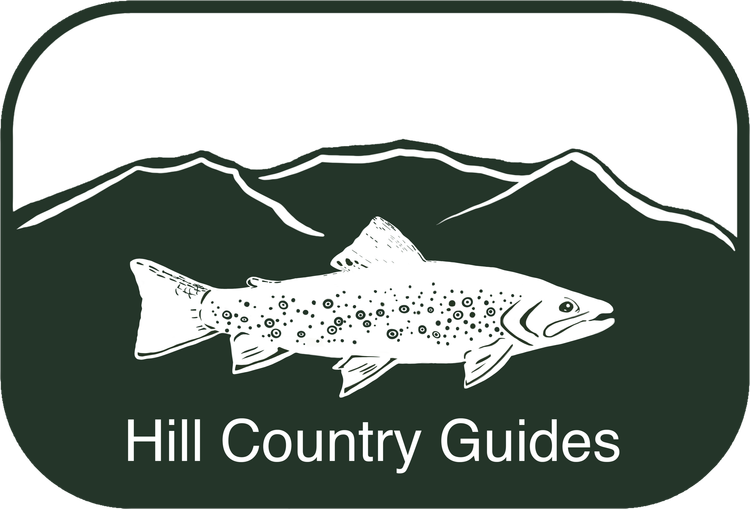Well the "regular" season ended today but the fishing on the lower Andro will remains open through the year. This section of water, from Berlin to the Maine border has been designated as Catch and Release Barbless Hook fishing with No Closed Season. Most NH trout waters close to fishing to protect spawning brook trout. The Androscoggin is primarily a rainbow trout fishery (spring spawners) and most if not all brook trout migrate from the Androscoggin to spawn in (now closed) feeder streams. For these reasons the river remains open to angling throughout the year, providing a unique opportunity to fish through late fall and winter.
On to the fishing. Last Wednesday we had fish on dries and nymphs with the biggest fish coming on a size 12 purple Haze dry fly. This was a spectacular catch to witness. I was able to watch the fish come up and engulf the fly, not five feet from the boat.
Took a size 12 Purple Haze Mayfly not five feet from the boat.
On my last Andro float I saw one of the best Blue Winged Olive* hatches of my life. Fish were feeding hard in every eddy of the river and all fish hooked on dries were wild rainbow trout. This does not mean that the fishing was easy. After each fish was hooked the rest of the feeders would wise up for at least ten minutes before feeding resumed. This presented little problem as it was an easy for me to simply row over to another pod of undisturbed trout. As if prolific dry fly fishing were not enough, when the sun began to set we took out the streamer rod and promptly landed two chunky bows on a baby rainbow trout pattern I'd tied up the night before. We must have missed another four fish on the streamer before the sun had set.
*Blue Winged Olives are a typical fall hatch on many streams throughout the country. Unlike most mayflies they hatch as waters cool, instead of as waters warm (maybe they should be called Fall Flies). They are similar to their spring brethren as they begin hatching when water temps reach the low fifties. They differ from their spring friends in that they will continue to hatch even once temps fall into the mid 40's. Thus BWO's (as they are called) can provide steady dry fly action when most people have packed away their fly rods.
Yesterday I had the rare opportunity to fish on my own. Although I was on foot I was able to find a few pods of rainbows feeding...to my delight...on Lady Bugs. This was a particularly gratifying find as I've been trying to key in on a true Lady Bug swarm for the past three years. I've always seen these terrestrials fluttering about on warm days, in mid-October and I've tried to find fish feeding on them a few times to no avail. Perhaps it was the water I chose or just the day itself but yesterday I landed eight rainbows on Lady Bugs with many other fish missed.
What is to come? The rain forecast for October 16th will put a hold on the Lady Bug hatch and bring back the BWO's. Look for good streamer conditions, especially if the water rises a bit. In the long term any more warmer days should produce more Lady Bug swarms. The BWO's will continue through early December, especially on calm overcast days. You might also still see some sporadic pale duns and Isonychia. Streamer fishing will continue to be productive as trout become more aggressive in response to the up-coming winter months. Brown trout will also be effected by spawning aggression in November and post-spawn hunger in early December. Later this month egg patterns will become effective for taking rainbows, as they look to capitalize on the spawning habits of their neighbors. Large nymphs such as stoneflies and woolly buggers will become more productive come November when fish focus on putting weight on for winter. The fishing is far from over!
Tight Lines,
Nate






